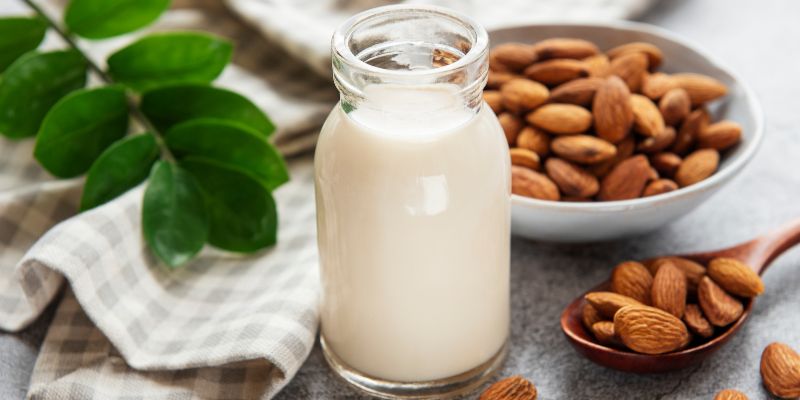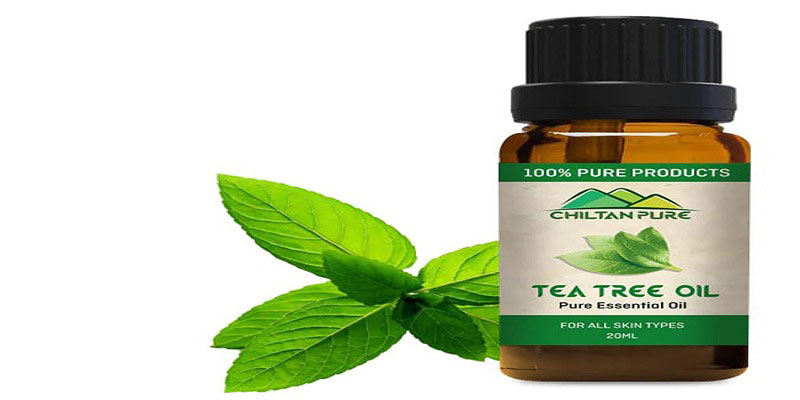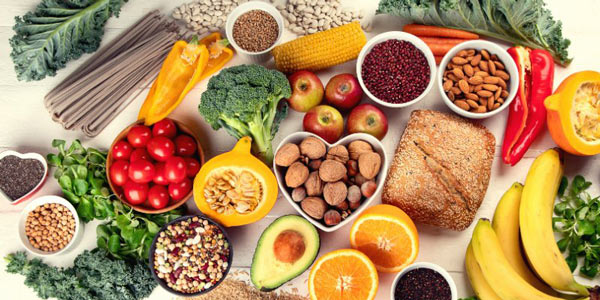
High-fiber diets emphasize dietary fiber, a complex carbohydrate found in plant-based meals. Fiber is relatively undigested. Hence, this diet differs from carbohydrate intake. This unique fiber property has several health advantages beyond the standard diet. High-fiber diets promote regular bowel motions and reduce constipation. Fiber's ability to survive the digestive system makes it an essential nutrient for digestive health. The benefits of a high-fiber diet extend to weight control. Fiber-rich meals satisfy and reduce calorie consumption. As a natural and durable hunger control method, this helps people lose or maintain weight. In addition to these immediate advantages, eating a variety of fiber-rich meals every day shows how complete this dietary plan is.
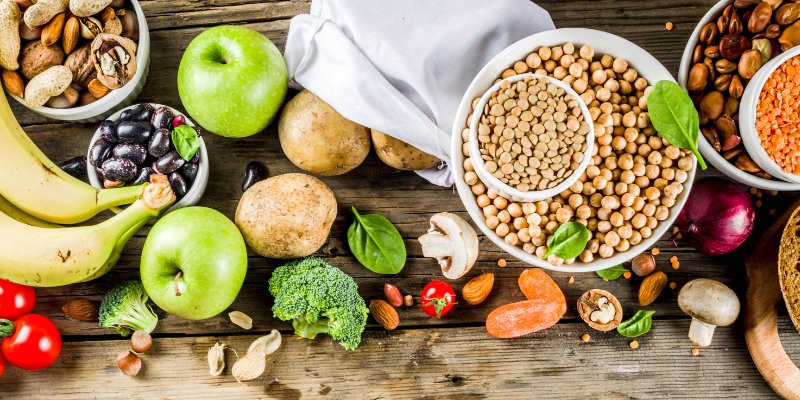
What Is a High-Fiber Diet?
High-fiber diets emphasize plant-based, fiber-rich meals. Insoluble and soluble fiber from foods offer various health benefits. Soluble fiber in oats, beans, and fruits lowers cholesterol and stabilizes blood sugar. However, insoluble fiber in whole grains and veggies bulks stool, reducing constipation. These fiber kinds work together for digestive health and more. High-fiber diets promote digestive regularity, weight management, heart health, and chronic disease prevention. For many people, a high-fiber diet is possible and valuable since it can be tailored to different diets.
The 7-Day Diet Plan:
Day 1: Energizing Oatmeal Breakfast
Start the week with fiber-rich oats and fresh fruit. Large amounts of soluble fiber in oats promote satiety and digestive health. Antioxidants and deliciousness come from berries.
Day 2: Hearty Quinoa Salad for Lunch
Quinoa salad with bright veggies is lunch. Protein- and fiber-rich quinoa is versatile. The colorful vegetables provide texture, vitamins, and minerals to your diet.
Day 3: Nutrient-Packed Lentil Stew for Dinner
As a fiber-rich dish, lentil stew is served for dinner. Lentils provide plant-based protein and fiber, making this stew hearty and healthful. Try different veggies for taste and nutrients.
Day 4: Wholesome Snacking with Nuts and Seeds
For midday energy, eat a handful of nuts and seeds. The crunch and healthful fats and fiber of almonds, chia seeds, and flaxseeds are delightful. Stay fed and meet your fiber objectives with this snack.
Day 5: Flavorful Vegetable Stir-Fry Dinner
A veggie stir-fry for supper will satisfy. Featuring bright vegetables, this meal provides fiber, vitamins, and minerals. For a healthy twist, serve it over brown rice.
Day 6: Fresh Fruit Snack
To fulfill sweet cravings, eat fresh fruit. You'll get natural sugars, vitamins, and fiber from apple slices, berries, or oranges. Simple yet healthy, this snack energizes you all day.
Day 7: Culmination with a Balanced Nut and Fruit Mix
Wrap the week with a balanced nuts and dried fruit combination. This snack balances fiber, healthy fats, and sweetness. It's a delicious way to end your 7-day high-fiber diet with plenty of nutrient-dense alternatives.
Hydration aids digestion throughout the week. Use this plan as a guide and adjust portion amounts to suit your needs and diet.
Pros and Cons of a High-Fiber Diet:
Consider the pros and cons of a high-fiber diet, which has several health benefits. Gut health is a significant advantage. Fiber helps avoid constipation and promotes regular bowel movements, promoting a healthy digestive tract. Fiber-rich meals assist weight loss by cutting calorie intake & generating satiety. Insoluble fiber lowers lipids and sustains arterial pressure, making a high-fiber diet suitable for cardiovascular wellness.
However, early problems of a high-fiber diet must be considered. Some people may suffer bloating or gas as their digestive system adjusts to more fiber. To avoid discomfort, gradually introduce fiber-rich meals and remain hydrated throughout this transition phase. Water aids fiber digestion; therefore, drinking plenty is essential.
By assessing the pros and cons, people may decide whether a high-fiber diet fits their lifestyle and health objectives. Understanding both sides allows for a balanced and practical approach, permitting people to receive the advantages of higher fiber consumption while overcoming transitory pain.
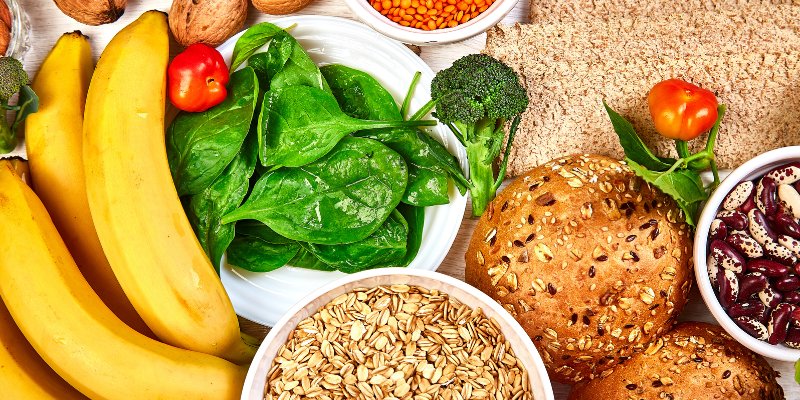
Foods High in Fiber:
Create a varied and tasty high-fiber diet by understanding the rich tapestry of fiber-rich foods. Whole wheat, brown rice, and quinoa are essential fiber sources with nutritional advantages and a range of textures and tastes. Apples, pears, berries, and oranges provide sweetness and fiber. Broccoli, carrots, and & kale give variety and nutrition to a fiber-rich diet. Vegan protein and fiber are found in lentils, bean sprouts, and garbanzo. In extra carbohydrates, almonds, chia beans, plus flaxseeds have a supple texture. Using this variety of food sources of fiber within meal planning keeps a high-fiber diet exciting and gratifying.
A broad spectrum of fiber-rich foods in one's diet supports digestive regularity, weight management, heart function, and chronic disease prevention. Each high-fiber meal enhances the enjoyment of eating and the body and mind's long-term wellness.
How Much Fiber Do You Need?
Consider age, gender, and health while determining fiber intake. Personal needs vary depending on physical activity and health circumstances. To adapt the digestive system and keep hydrated, gradually increase fiber consumption. Healthcare professionals and certified dietitians may give individualized fiber advice based on health objectives and concerns.
Conclusion:
By prioritizing foods made from plants and high in insoluble as well as soluble fiber, this eating plan promotes digestive well-being and more. It helps achieve weight control, heart health, and chronic disease prevention. Due to its versatility, a diet high in fiber allows people to design sound, tasty meals. This adaptability makes it easy to include fiber-rich foods into everyday diets, making the switch sustainable and delicious.
Despite early bloating or gas from increased fiber consumption, the long-term health benefits make this nutritious lifestyle worth embracing. Discover varied grains, veggies, fruit, legumes, nuts, plus seeds in a high-fiber diet for a tasty trip for optimal health.
